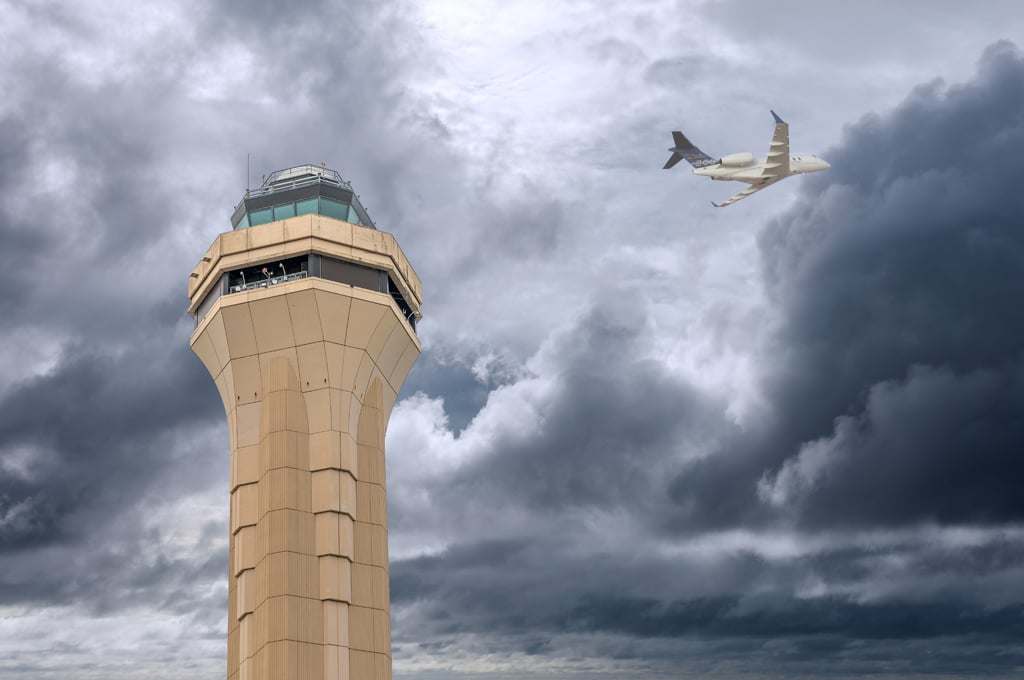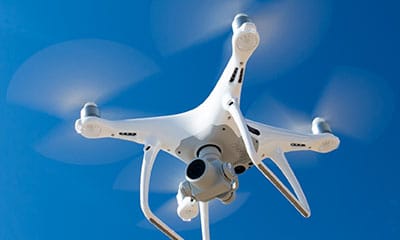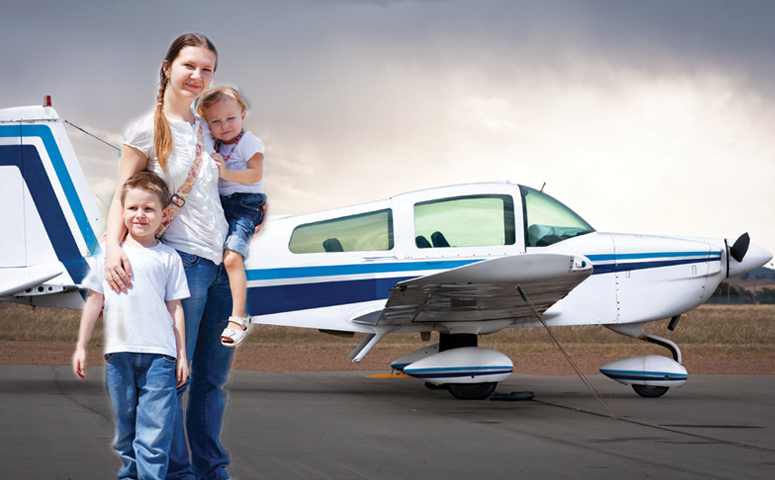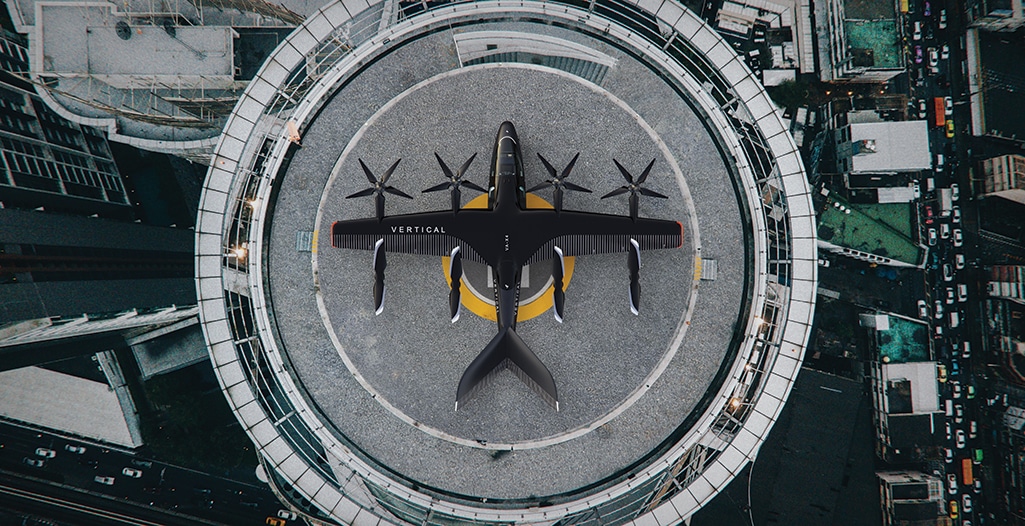Tornado Season and Aviation Insurance: What You Need to Know
Whether for business or pleasure, pilots love flying. When threatening storm clouds appear on the horizon, special precautions become necessary.
Because aircraft are designed to utilize airflow to produce the lift that keeps them airborne, they are at the mercy of strong winds. The rapidly rotating columns of air, with or without a funnel cloud that is the hallmark of a tornado, are particularly troublesome. Like the thunderstorms with which they are associated, tornadoes are weather phenomena that should be given great respect and a wide berth.

According to the National Severe Storms Laboratory (NSSL), approximately 1,200 tornadoes occur in the U.S. each year. Many people associate these violently rotating columns of air, where wind speeds can exceed 300 mph, with a loosely defined area in central North America commonly referred to as “tornado alley.” However, as NSSL points out, “The U.S. tornado threat shifts from the Southeast in the cooler months of the year, toward the southern and central Plains in May and June, and the northern Plains and Midwest during early summer. Tornadoes can occur and have been reported in all 50 states!”
Not only does the geographical threat shift, but tornadoes themselves can be highly erratic in the path they take. Most long-time aviation professionals have heard tales of storms that destroyed one hangar while leaving the next one untouched, or that plucked one or two parked aircraft out of a line and sent them hurtling through the air while the others only rocked a bit on their landing gear. It is this unpredictability that most concerns pilots and ground service personnel since it makes avoidance planning so challenging.
A Rough Start to This Year’s Tornado Season
So far, 2020 has been a tumultuous year in many ways, and the weather is no exception. March and April saw a number of powerful storm systems spawn tornadoes around the country.
One front gave birth to twisters in both Louisiana and South Carolina. Two of them touched down on airports, causing extensive damage to facilities and aircraft. As many as 40 tornadoes were reported on April 12 and 13 alone, causing 32 fatalities and producing power outages that affected an estimated 1.3 million people.
Tornadoes and Aviation Insurance
While the likelihood of any given aircraft being damaged by a tornado is small, that risk does factor into insurance. For example, your physical damage insurance cost may be higher if your aircraft is tied down outdoors in severe weather prone areas such as “tornado alley.”
Assessment of storm damage is another consideration. “When a service vehicle collides with an aircraft, the kinds of forces involved, the point of impact, and other details can be readily determined. That makes inspecting and evaluating damage for determining a repair plan relatively straightforward,” says Rod Milton, vice president and general aviation practice leader at Global Aerospace.
“On the other hand, when a tornado moves a plane from where it was parked to a spot some distance away, it is difficult to have a full understanding of how that happened,” he notes. “Was the aircraft pushed sideways, putting tremendous lateral pressure on its landing gear? Was it lifted and then dropped exerting an entirely different kind of force on the aircraft? Uncertainties like these result in a more challenging evaluation process as damage may not be readily apparent as how the aircraft moved and what objects came into contact with it are not easily determinable.
Another consideration regarding weather-related damage and physical damage insurance involves the claims adjusting that must be performed. Evaluating storm damage often reveals the need to replace not only damaged life-limited parts, but undamaged parts that do not meet the manufacturer’s “return to service” criteria. Pilots and operators should keep in mind that physical damage insurance normally addresses storm-damaged life-limited parts on a prorated basis but usually does not cover items that require replacement due to normal wear and tear.
“The assessment of damage from any cause can uncover parts in need of replacement, but this is especially common with storm damage,” says Milton. “Since you often don’t know what you’re looking for in the storm damage scenario, you end up finding items that must be resolved. For example, if debris gets into a turbine engine and makes its way into the core, a teardown, inspection and cleaning will be necessary. During that process, items that need to be repaired or replaced, even if undamaged, will often be discovered. Whether insurance will cover the cost is uncertain.
Creating Your Severe Weather Plan
With more predictable and slower-moving storms like hurricanes, it’s easier for pilots and operators to create a plan for how to respond. However, even though tornadoes are highly unpredictable, there are still practical steps that can be taken before and during tornado season to better deal with storms and their aftermath.
- Review your insurance policy on a regular basis. This may include talking with your aviation insurance provider ahead of tornado season about whether you are adequately protected or if changes should be made to your policy.
- Consider your options for protecting your aircraft. The reality may be that there isn’t much you can do other than tie the aircraft down securely and hope for the best. But if you have the ability to safely move the aircraft to another location when a particularly menacing storm system is approaching, it may be worth the effort.
- Designate one or more pilots or support personnel to lead storm response efforts. In an emergency, there is no time for questions about who is responsible for protecting aircraft, personnel and other assets.
- Assess your hangar’s wind resistance. If you hangar your aircraft, be sure you understand how much protection the structure offers. Hangar doors are often the first point of failure, so a pre-storm-season initiative to strengthen them may increase the safety of your aircraft and equipment stored inside.
- Limit available “projectiles” as storms approach. Tornadoes are well-known for their ability to turn any loose object into a dangerous missile. Having a plan for quickly gathering and securing tools, equipment and other items can be helpful.
- Be mindful of what truly matters. If you’re able to minimize the property damage from a violent storm, that’s great. But, of course, the top priority in a weather crisis is ensuring that your personnel are safe. Everyone on your team should understand that there is no expectation that they take risks to protect aircraft or equipment, and in fact, many organizations prohibit team members from doing so for their own safety.
Vigilance Pays Dividends in Tornado Season and Every Season
Dangerous weather conditions can occur at any time of year. Understanding and preparing for the risks, and then keeping a close eye on forecasts can help you protect your aircraft, both in the air and on the ground.
Being proactive and vigilant are the keys to avoiding or minimizing storm-related aircraft damage and injuries. And if your aircraft is damaged by a tornado, high-quality insurance is the key to limiting the financial repercussions.




